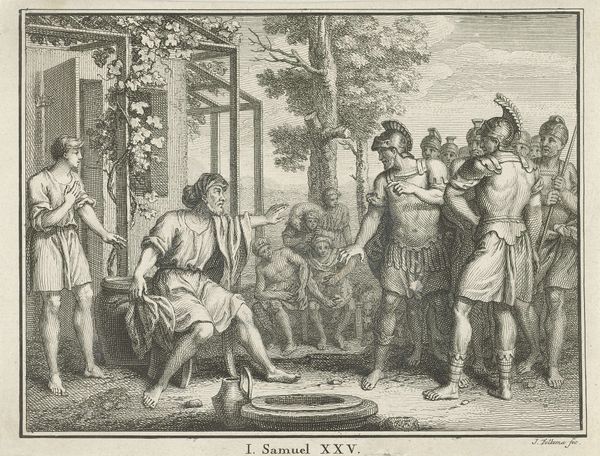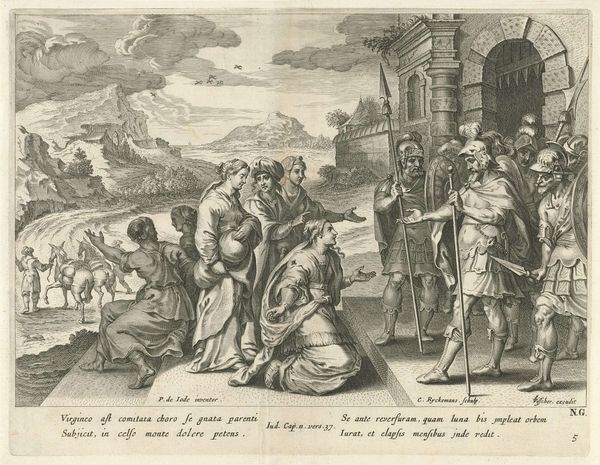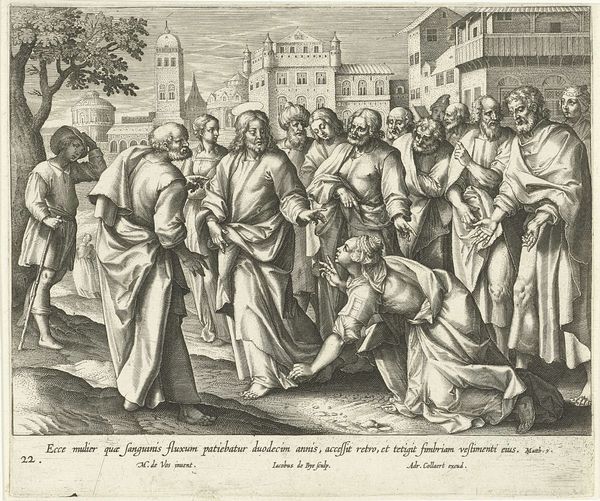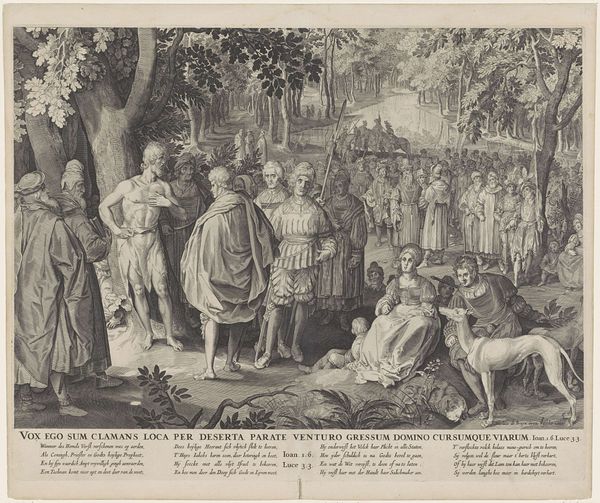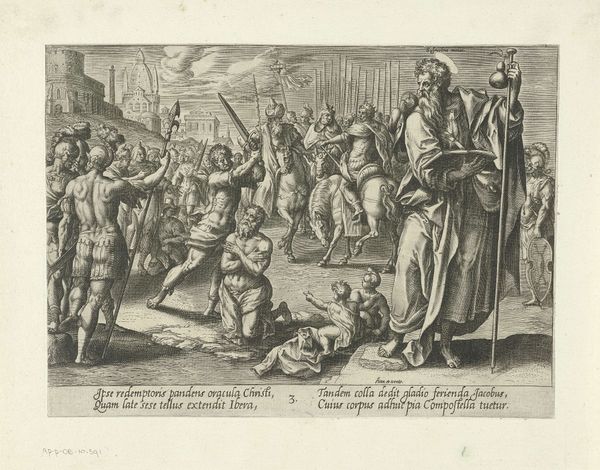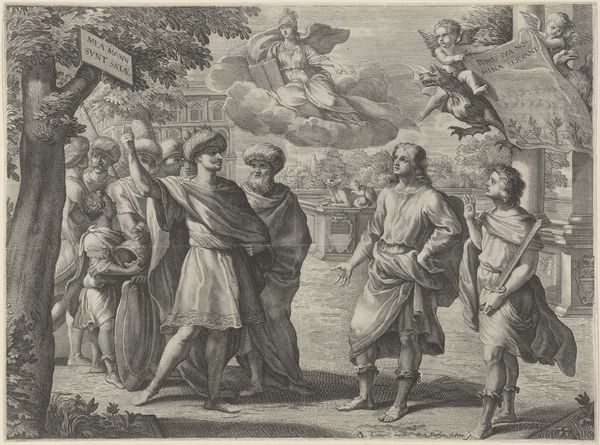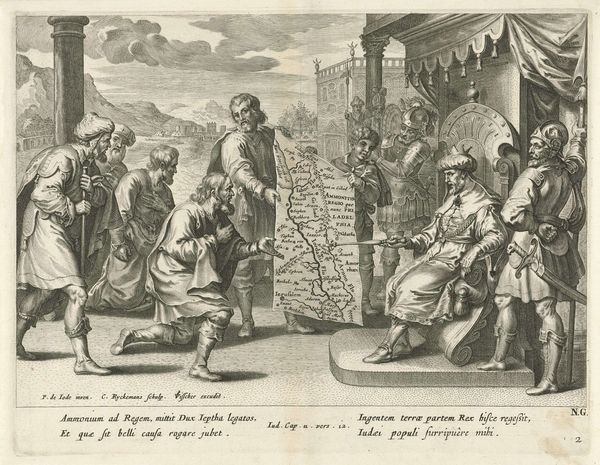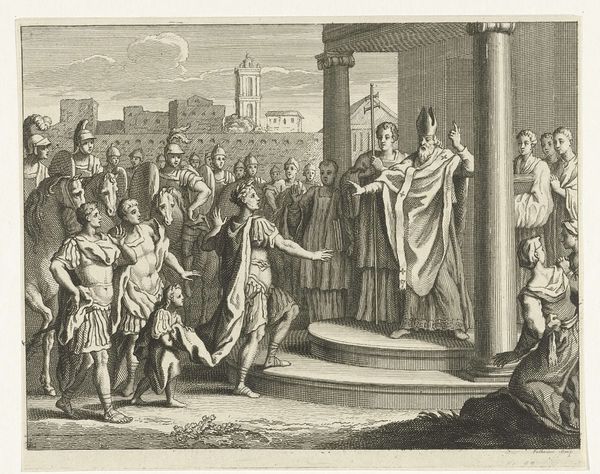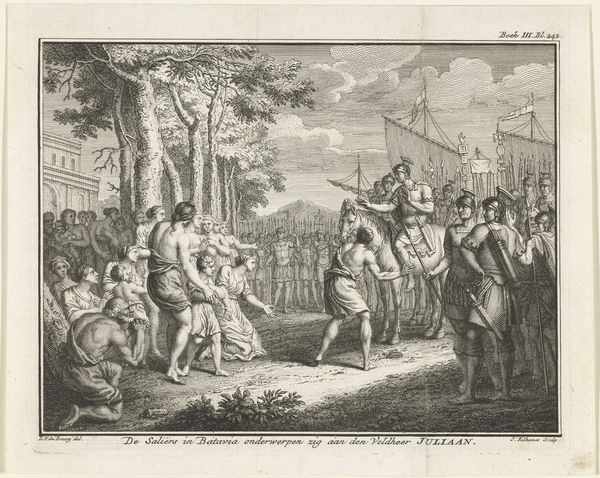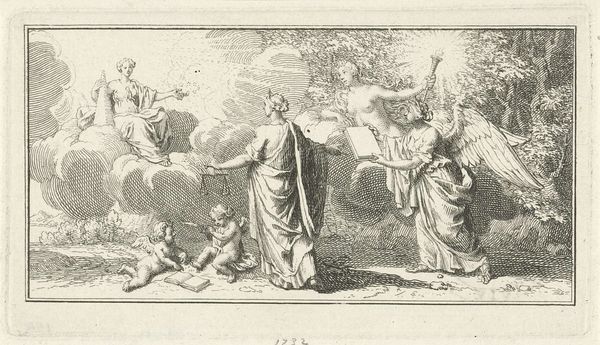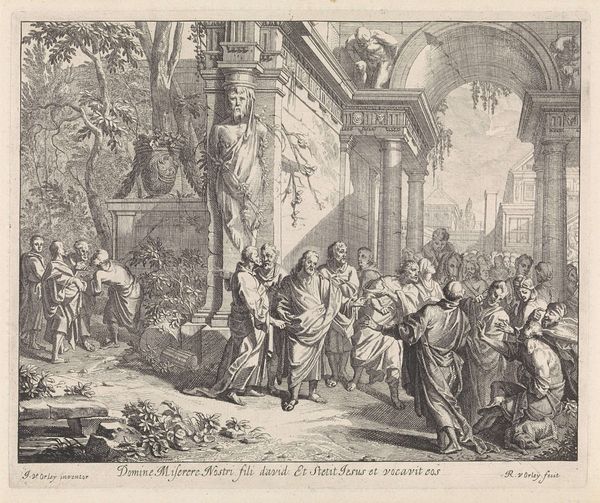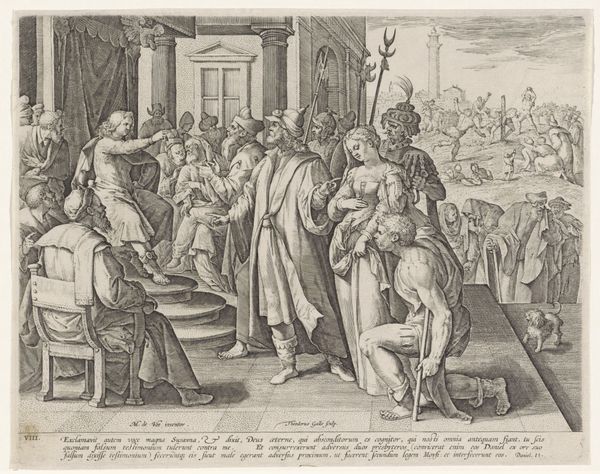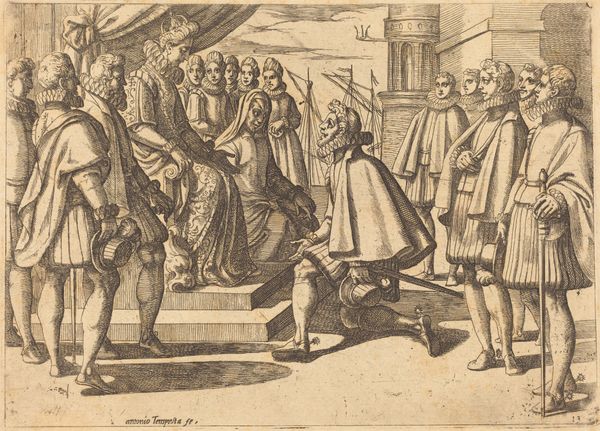
print, engraving
# print
#
landscape
#
11_renaissance
#
history-painting
#
engraving
Dimensions: height 168 mm, width 200 mm
Copyright: Rijks Museum: Open Domain
Curator: It has this almost storybook quality, wouldn't you say? Like a scene plucked from a rather serious fairy tale. Editor: This engraving, "H. Sebaldus van Neurenberg als kluizenaar," or "H. Sebaldus of Nuremberg as a hermit" by Jan van Londerseel, likely created sometime between 1580 and 1625, certainly does present a constructed narrative. What catches your eye specifically about its fairytale mood? Curator: It’s the almost theatrical arrangement of the figures within that wood. This group looks like a troupe of actors pausing mid-scene; Saint Sebaldus sermonizing while his former life observers the new. The setting feels both intimate and a bit performative. Like an epiphany, viewed by many. Editor: The visual construction reinforces societal norms and power dynamics. Consider the contrasting attire, for example. Saint Sebaldus is cloaked in relatively humble garb while those arranged around him wear clothing indicative of a wealthy ruling class. This could certainly play into contemporary understandings of class structure and, potentially, to underscore his choice of "giving up" those very structures to choose a more isolated and ostensibly moral life. The artist underscores Sebaldus' break with worldly status in embracing religious devotion. Curator: Absolutely. And yet, doesn’t he look almost…content? As though the weight of worldly matters is literally dropping off his shoulders? It suggests a sense of…joyous rebellion against constraint. Or, perhaps, as someone who spends a fair amount of time alone I may be merely projecting! Editor: And it could be seen from the alternative angle as being somewhat anti-social, pushing aside important members of society to venture down an alternative path alone, perhaps that also reveals other aspects of Jan van Londerseel's life at the time. Either way it makes for compelling considerations. Curator: A narrative, perfectly etched in time. That's fascinating! Editor: Yes, it leaves me with quite a lot to consider in how artists used history-painting and religious iconography. Thank you.
Comments
No comments
Be the first to comment and join the conversation on the ultimate creative platform.
